Feb. 18 to Feb. 24
Until 1985, Taiwan’s amateur (ham) radio scene consisted of one person: Tim Chen (陳實忻), who held the country’s only license due to Martial Law era restrictions. According to a Liberty Times (the sister newspaper of the Taipei Times) report, this resulted in the unusual situation where Taiwan Garrison Command had to establish a set of amateur radio regulations just for him.
Since there was nobody else in Taiwan to talk to, Chen connected with people around the world, using Morse code at first via his station BV2A, and gaining voice communication capabilities in 1974 through BV2B. Chen was strictly forbidden to speak with anyone in China or the Soviet Union, but he enjoyed much popularity as the world’s only BV (Taiwan’s country code) station operator — so much so that US senator and fellow ham enthusiast Barry Goldwater specifically requested to tour Chen’s two stations when he visited Taiwan in 1986.
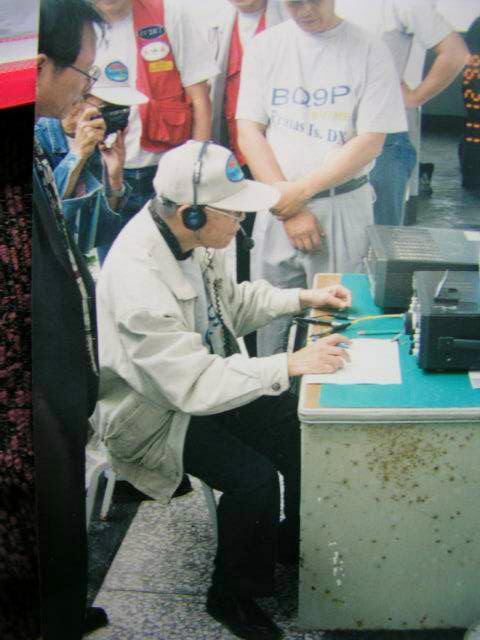
Photo: Wang Jui-te, Taipei Times
When Chen died on Feb. 22, 2006, an American Radio Relay League (ARRL) obituary noted that Chen was “more famous than he knew.” Indeed, Chen told Commonwealth Magazine in 1984 that his favorite part of amateur radio was the people he could connect to.
“Think about it, now there’s at least 70,000 or 80,000 people in the world who know me,” Chen said. “Where else would you have the chance to make so many friends?”
FROM The NORTH POLE TO ANTARCTICA
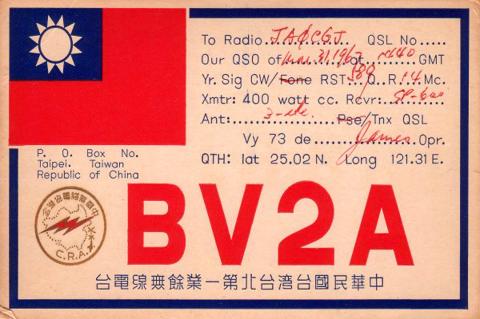
Photo courtesy of Wikimedia Commons
Chen got his start in amateur radio when he was a 19 year old in China. He stopped for several years after retreating to Taiwan with the Chinese Nationalist Party (KMT) in 1949, but in 1955 he rekindled his passion by forming the Chinese Radio Association (中國無線電協進會) with a few friends. He managed to obtain a operating license through the association before the government decided that it was too risky to issue any more.
Chen established BV2A in 1960, drawing quite a stir around the ham world. He tells Commonwealth Magazine that since enthusiasts are drawn to remote and obscure locations, they jumped at the chance to speak to the first and only operator in Taiwan.
By the time Commonwealth Magazine visited Chen’s 5-ping (16.5m2) space, he had connected with people on every continent — including Antarctica and the North Pole. Chen told the magazine that he dutily performed his part in “citizen diplomacy” by explaining to his contacts where Taiwan was located and the difference between the Republic of China (ROC) and the People’s Republic of China.
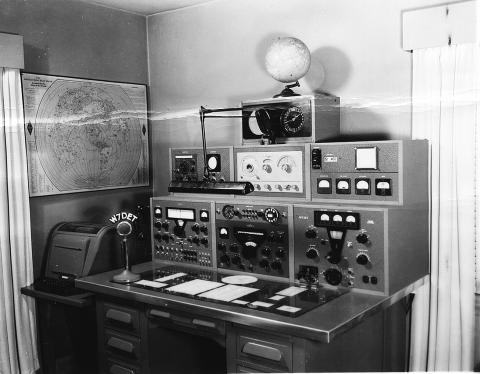
Photo courtesy of Seattle Municipal Archives
Chen was always excited to send out a signal because he never knew where it would go or who he would get on the other end. After exchanging names and addresses, enthusiasts would mail “QSL cards” to each other. The size of a postcard, this card provides the user’s frequency, address, times for communication and other vital information.
Instead of a personal emblem, Chen station’s QSL identification card, which he had mailed to more than 200,000 users around the world by 1983, displayed an ROC flag. The walls of his cramped space were plastered with QSL cards he had received. A favorite story he liked to tell was when he picked up signals from a station belonging to Palden Thondup Namgyal, the last ruler of the Kingdom of Sikkim in today’s India. Unfortunately, the king did not reciprocate, leading to a missed connection.
His contacts came in handy when he and his wife traveled abroad, as people whom he never met would show up to give them a tour of each city. When they were denied entry into the UK, two British radio enthusiasts showed up to serve as guarantors.
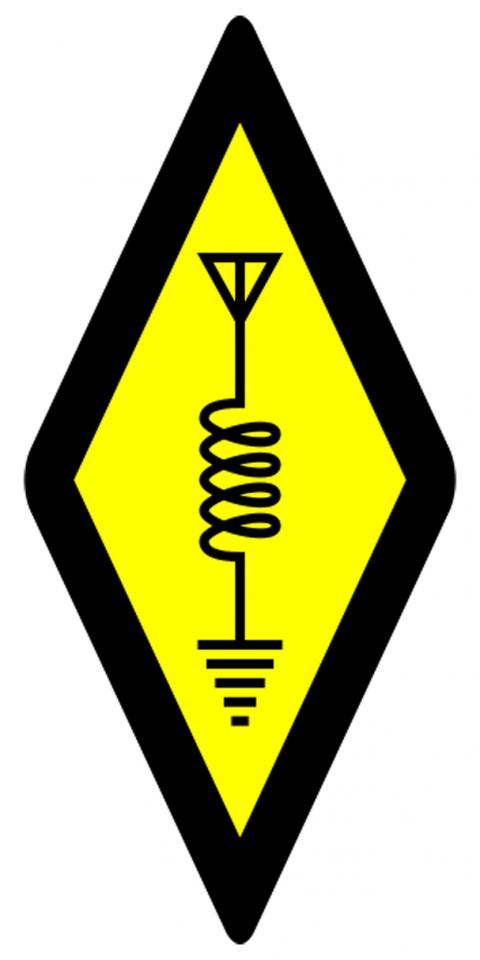
Photo courtesy of Wikimedia Commons
And people visited Taiwan because of him as well. He told Commonwealth Magazine that he would often receive 50 to 60 foreign visitors per year.
ADVENTURES ON AIR
Chen also took part in international amateur radio competitions. A Taiwan Review article from 1983 sums up his third straight championship in the continuous wave (CW) category. More than 300 amateurs from 100 countries took part, where they sent continuous signals for up to 24 hours in a bid to reach as many stations as they could. Contestants were awarded one point for making a connection in their region, three for an intercontinental connection and five for reaching a station in Brazil, which was that year’s host country.
Chen could only spare eight hours due to his health and job constraints, but he managed to connect with 274 stations in more than 30 countries en route to the trophy.
The government’s decision to start issuing ham licenses again in 1984 was big news to the amateur radio community. A bulletin by the Texas DX Society announced the news with the entry, “BV-Taiwan … not so rare?” where it called Taiwan a “small but very important island” and noted that “in the not so distant future, BV will surely be a regular for all contests.”
Now no longer alone, Chen continued his ham adventures as his association grew and undertook more ambitious endeavors. In 1998, an 84-year-old Chen became the oldest person to set foot on the Pratas Island (Dongsha Island, 東沙島) in the South China Sea, connecting with tens of thousands of enthusiasts using portable equipment.
In 2005, the government recognized Chen as the “Father of Amateur Radio in Taiwan” and presented him with a lifetime achievement award. When he died, fellow enthusiasts posted memorials about him under his ARRL obituary, with a user writing, “It seems as if all the great ones have passed.”
Taiwan in Time, a column about Taiwan’s history that is published every Sunday, spotlights important or interesting events around the nation that have anniversaries this week.
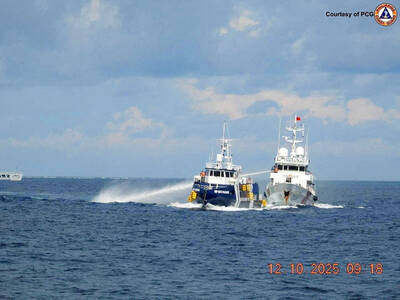
Many people noticed the flood of pro-China propaganda across a number of venues in recent weeks that looks like a coordinated assault on US Taiwan policy. It does look like an effort intended to influence the US before the meeting between US President Donald Trump and Chinese dictator Xi Jinping (習近平) over the weekend. Jennifer Kavanagh’s piece in the New York Times in September appears to be the opening strike of the current campaign. She followed up last week in the Lowy Interpreter, blaming the US for causing the PRC to escalate in the Philippines and Taiwan, saying that as

This year’s Miss Universe in Thailand has been marred by ugly drama, with allegations of an insult to a beauty queen’s intellect, a walkout by pageant contestants and a tearful tantrum by the host. More than 120 women from across the world have gathered in Thailand, vying to be crowned Miss Universe in a contest considered one of the “big four” of global beauty pageants. But the runup has been dominated by the off-stage antics of the coiffed contestants and their Thai hosts, escalating into a feminist firestorm drawing the attention of Mexico’s president. On Tuesday, Mexican delegate Fatima Bosch staged a

Taiwan can often feel woefully behind on global trends, from fashion to food, and influences can sometimes feel like the last on the metaphorical bandwagon. In the West, suddenly every burger is being smashed and honey has become “hot” and we’re all drinking orange wine. But it took a good while for a smash burger in Taipei to come across my radar. For the uninitiated, a smash burger is, well, a normal burger patty but smashed flat. Originally, I didn’t understand. Surely the best part of a burger is the thick patty with all the juiciness of the beef, the

Would you eat lab-grown chocolate? I requested a sample from California Cultured, a Sacramento-based company. Its chocolate, not yet commercially available, is made with techniques that have previously been used to synthesize other bioactive products like certain plant-derived pharmaceuticals for commercial sale. A few days later, it arrives. The morsel, barely bigger than a coffee bean, is supposed to be the flavor equivalent of a 70 percent to 80 percent dark chocolate. I tear open its sealed packet and a chocolatey aroma escapes — so far, so good. I pop it in my mouth. Slightly waxy and distinctly bitter, it boasts those bright,